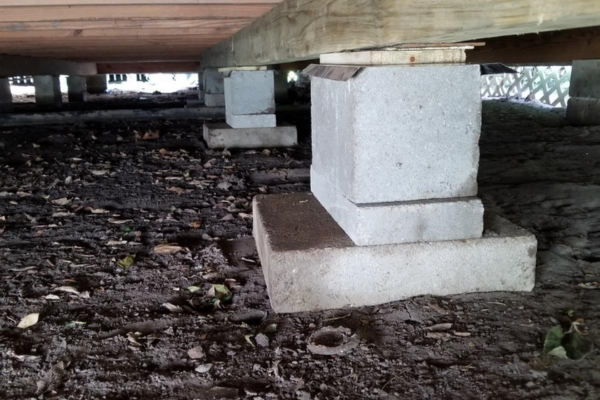Pier and beam foundations, while excellent for managing shifting soils and providing easy access for repairs, can experience a range of issues that might affect your home’s integrity and safety. In this blog post, we’ll discuss the most common problems associated with pier and beam foundations, particularly in areas like Houston, Texas. Understanding these issues can help homeowners like you stay proactive in maintaining the foundation health of your home. Our team at Allied Foundation is committed to helping you identify and address these challenges effectively.
Understanding Pier and Beam Foundations
Before we explore the problems, it’s essential to understand a pier-and-beam foundation. This type of foundation consists of deep-set piers connected by beams that support your home’s structure. The space between the ground and your home, known as the crawl space, is crucial for accessibility and air circulation but can also be a source of several issues if not properly managed.
Key Problems with a Pier and Beam Foundation and Their Symptoms
1. Moisture Damage:
- Signs: Increased humidity within the crawl space, mold growth, or rotting wood.
- Impact: Moisture can severely damage the wooden beams and floor joists, leading to structural weaknesses.
2. Shifting Piers:
- Signs: Uneven floors, stuck doors or windows, and visible cracks on the interior or exterior walls.
- Impact: As soil shifts and settles, piers can move, causing the foundation—and thus the entire structure—to become unlevel.
3. Insect Infestations:
- Signs: Presence of mud tubes, weakened or hollow-sounding wood, and visible damage to wooden components.
- Impact: Termites and other wood-boring insects can compromise the structural integrity of the beams, requiring extensive repairs.
4. Inadequate Ventilation:
- Signs: Musty odors, high humidity levels in the crawl space, and condensation on insulation or pipes.
- Impact: Without proper ventilation, moisture issues become more prevalent, exacerbating mold growth and wood decay.
Preventative Measures and Solutions for Pier and Beam Foundations
Routine Inspections:
Regularlyinspect your foundation for signs of stress. Allied Foundation offers expert assessments to identify potential problems early.
Moisture Management:
- Ensure proper drainage around your home’s perimeter to prevent water accumulation.
- Install vapor barriers in the crawl space to reduce ground moisture seeping into the area.
- Consider using dehumidifiers to control moisture levels effectively.
Stabilization Techniques:
- If piers have shifted, they may need to be adjusted or replaced to relevel the foundation.
- Helical piers might be used to stabilize the foundation in more severe cases.
Addressing Insect Infestations:
- Regular treatments for termites and other pests are crucial. Consult with pest control professionals to treat and prevent infestations.
Enhancing Ventilation:
- Increase airflow in the crawl space with additional vents or fans.
- Keep vents clear from obstructions to ensure effective air movement.
Address Your Pier and Beam Foundation Challenges Today
Dealing with foundation issues can be daunting, but understanding the common problems with pier and beam foundations can equip you with the knowledge to act swiftly and effectively. Remember, early intervention is key to minimizing damage and repair costs. If you encounter any of the symptoms discussed above, don’t hesitate to contact Allied Foundation for a professional evaluation and tailored solutions. Visit our website atAllied Foundation to learn more about our services or to schedule an inspection.



